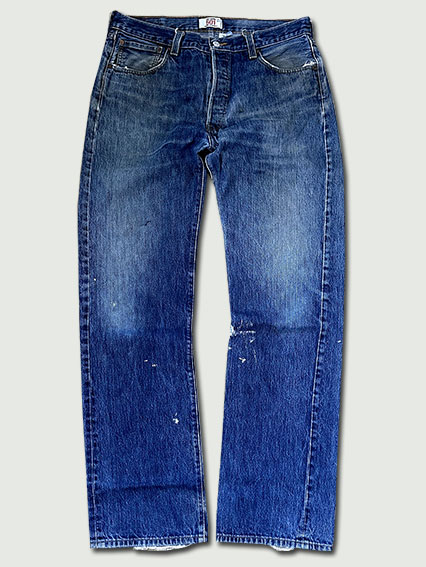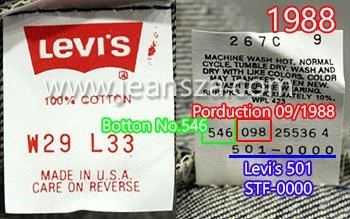Decoding the Levi's "Bat Wings" Care Labels (1987-1994)
This guide will show you how to decode the "Bat Wings" care label, a design familiar to many Levi's enthusiasts. This style was used on Levi's jeans from 1987 to 1994 and came in two main colors: red and black. By examining these labels closely, you can uncover valuable information about your jeans' authenticity and production history.
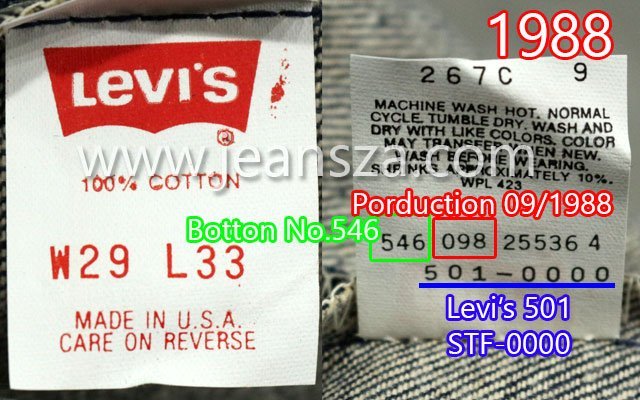
Understanding the "Bat Wings" Label
The "Bat Wings" label first appeared around 1987, though tags from that specific year can be rare due to an overlap with older label styles. A good example is a tag from September 1988, a year when the "Bat Wings" design was in full production.
-
Understanding the Texture: If you look closely at the label's texture, you'll notice it has a fibrous feel with a thin, smooth coating. This design was made to be gentle on the skin and is a key sign of authenticity. All details on the label, including the logo and text, are either screened or printed with color, not embroidered. This is a crucial distinction from later label styles that used embroidery.
-
Color Variations: While the red "Bat Wings" label is the most common, a black version was introduced around 1991. Both colors were used concurrently until the end of this label's era in 1994. The black label is often found on certain models, such as black or colored denim jeans, adding to their unique character.
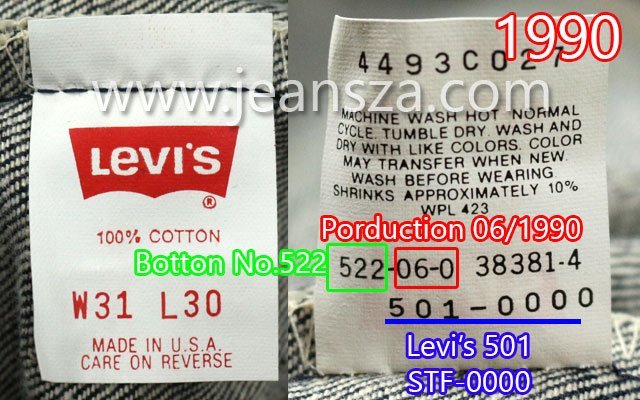

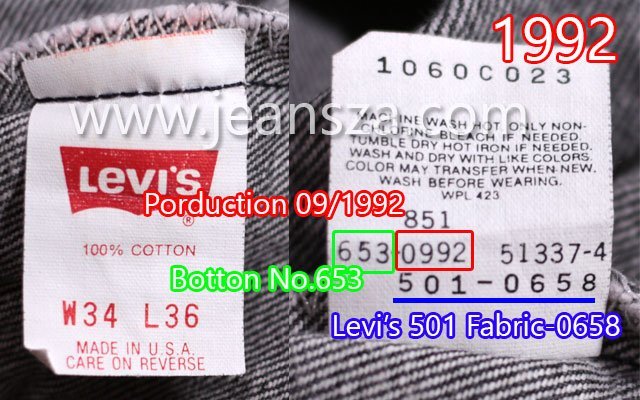
The Role of the Bat Wings Label in Authentication
For collectors, the "Bat Wings" label provides a crucial snapshot of Levi's production during the late 1980s and early 1990s, a period of significant change for the brand. Here’s what you can learn from these tags:
-
Production Date: The four-digit number at the bottom of the label is the production code. The first two digits represent the month, and the last two represent the year. For example, a code of 0988 indicates a production date of September 1988. This simple code provides an exact date for your jeans.
-
Factory Code: These labels often include a three-digit factory code that corresponds to the number stamped on the back of the top button. This code verifies the jeans' origin and is an essential tool for authenticating the garment. A mismatch between the care tag and the button code is a major red flag for a counterfeit pair.
-
Model Number and Fabric Code: The care tag also lists the jeans' model number (e.g., 501, 505) and a corresponding fabric code. This information is vital for confirming the specific type of denim used, such as 0217 for the 505 model.
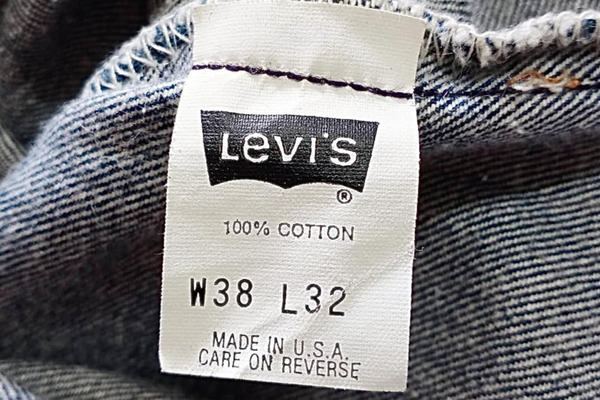
The Transition to the "Silver Lining" Label
The "Bat Wings" label era came to an end in 1994 with the introduction of the new "Silver Lining" label. This change was a direct response to the global rise of counterfeit jeans. The new "Silver Lining" tag featured a metallic, ribbon-like strip that was difficult for counterfeiters to replicate, marking a new phase in Levi's authentication strategy.
In summary, the "Bat Wings" care label, with its specific design, texture, and coding system, is a cornerstone of vintage Levi's authentication. By understanding these details, you can accurately date your jeans and verify their authenticity. This specific "Bat Wings" style was used exclusively during the 1987-1994 period, making any pair with this tag a true representation of its era.


